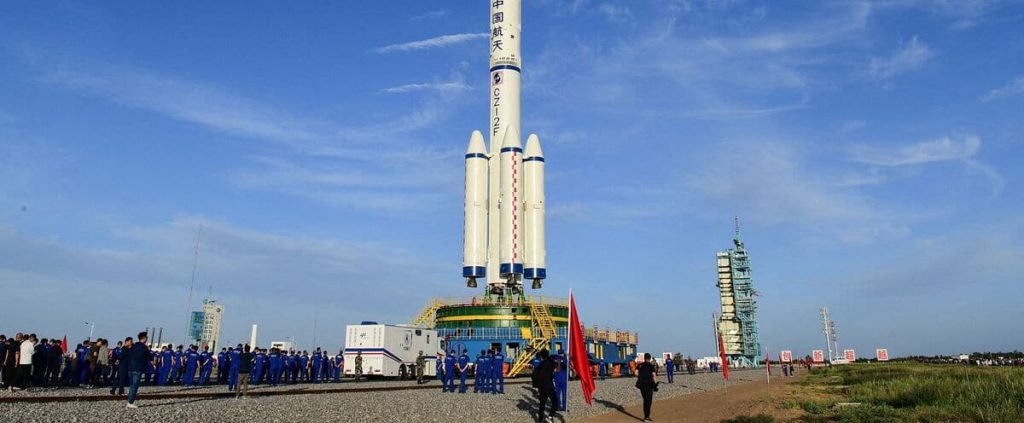Beijing | The Chinese are back in space: More than four years after its last manned mission, China is preparing to send its first crew of three astronauts to its under-construction space station.
In the context of tension with the West, the success of the mission is a matter of prestige for Beijing preparing to celebrate the 1he is July Centenary of the Chinese Communist Party.
According to the latest forecast, the Shenzhou-12 spacecraft, propelled by a Long March 2F rocket, should take off from Jiuquan Base, in the Gobi Desert (Northwest), Thursday.
Its goal: to dock with Tianhe (“Heavenly Harmony”), the only station module already in space. The cosmonaut’s home and control center, placed at the end of April in low Earth orbit (350-390 km above sea level).
The three astronauts will stay in space for three months, a record period for China. Its previous manned mission at the end of 2016, Shenzhou 11, lasted only 33 days.
“The astronauts’ goal will be to have their new home in space ready for use,” says Jonathan McDowell, an astronomer at the Harvard-Smithsonian Center for Astrophysics in the US.
“The objective of the mission is practical above all else. It will not be revolutionary in its content.”
In three months, the astronauts will no longer be idle: maintenance, equipment installation, spacewalks, preparing for upcoming construction missions and setting up future crews.
“In short, there are a lot of delicate and complex tasks,” said Chen Lan, analyst at GoTaikonauts.com. For him, the Shenzhou-12 presents “many challenges” for the crew who “will have to very quickly get acquainted with the new equipment.”
“It’s a new plant, so the risk is a major system collapse. But I think it’s going to be just fine,” says McDowell.
no women
Named in English CSS (meaning “Chinese Space Station”) and in Chinese Tiangong (“Heavenly Palace”), when completed, the station will be similar in size to the former Soviet Mir station (1986-2001). She will be at least 10 years old.
The Shenzhou-12 mission is the third launch of the 11 that will be required to build the station between 2021 and 2022. Altogether, four manned missions are planned.
In addition to the already existing Tianhe, the remaining two modules (which will be laboratories) are expected to be sent into space next year.
These will make it possible to conduct experiments in biotechnology, medicine, astronomy or space technologies.
If Wang Yaping, the second Chinese in space, was expected for a while to be part of Shenzhou-12, it would be three men who would eventually make up the unknown crew.
However, women will participate in the following missions, said Yang Liwei, the first Chinese to reach space in 2003 and now the chief in charge of the human space program.
Sino-American rivalry
If non-Chinese astronauts, especially Europeans, can one day stay in CSS, the likelihood of seeing an American there is low: American law prohibits NASA from having any connection with China.
“Those who planned for the International Space Station (under US command) and CSS (Chinese) did not plan for this Sino-American rivalry, which is becoming a reality today,” Chen Lan notes.
But this isn’t necessarily a bad thing. Fair and healthy competition will benefit both countries and humanity.”
The Asian giant has invested billions of euros for several decades to catch up with other space powers.
In May, China became the second country in the world, after the United States, to make a small robot called “Zhurong” that is developing on the surface of Mars.
This rover has already sent out several images of the Red Planet, including a stunning “selfie” last week.
Among other achievements, China landed a machine on the far side of the moon in early 2019, the first of its kind in the world.
Last year, lunar samples brought back and completed Beidou, a satellite navigation system (a competitor to the US GPS).
Looking ahead, Beijing plans to send humans to the Moon (around 2030) and build a base there with Russia.

“Hardcore beer fanatic. Falls down a lot. Professional coffee fan. Music ninja.”







More Stories
Robert Sovi Institute for Occupational Health and Safety Research
Starliner's first manned flight in May
Why do we feel cramps when we exercise?